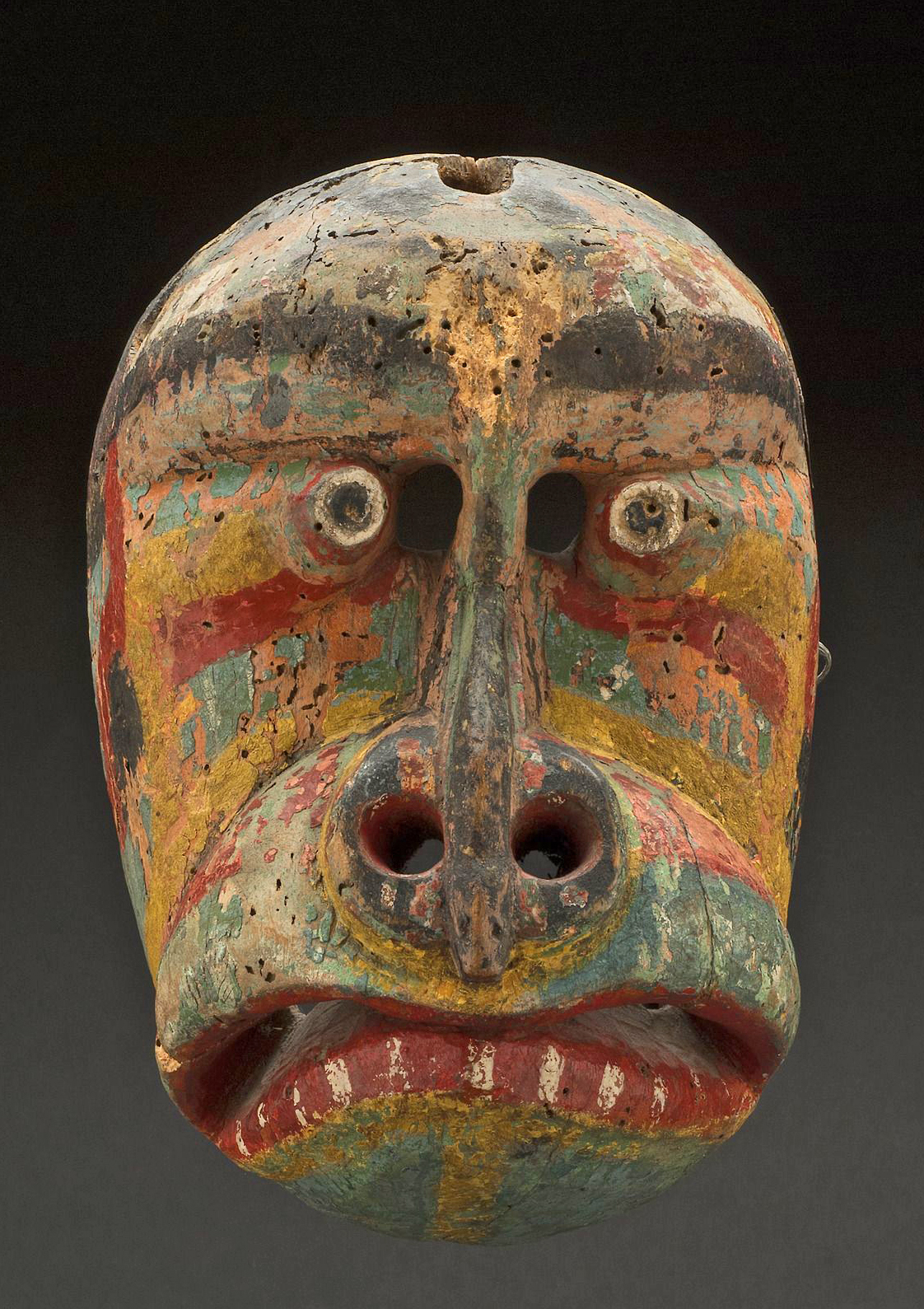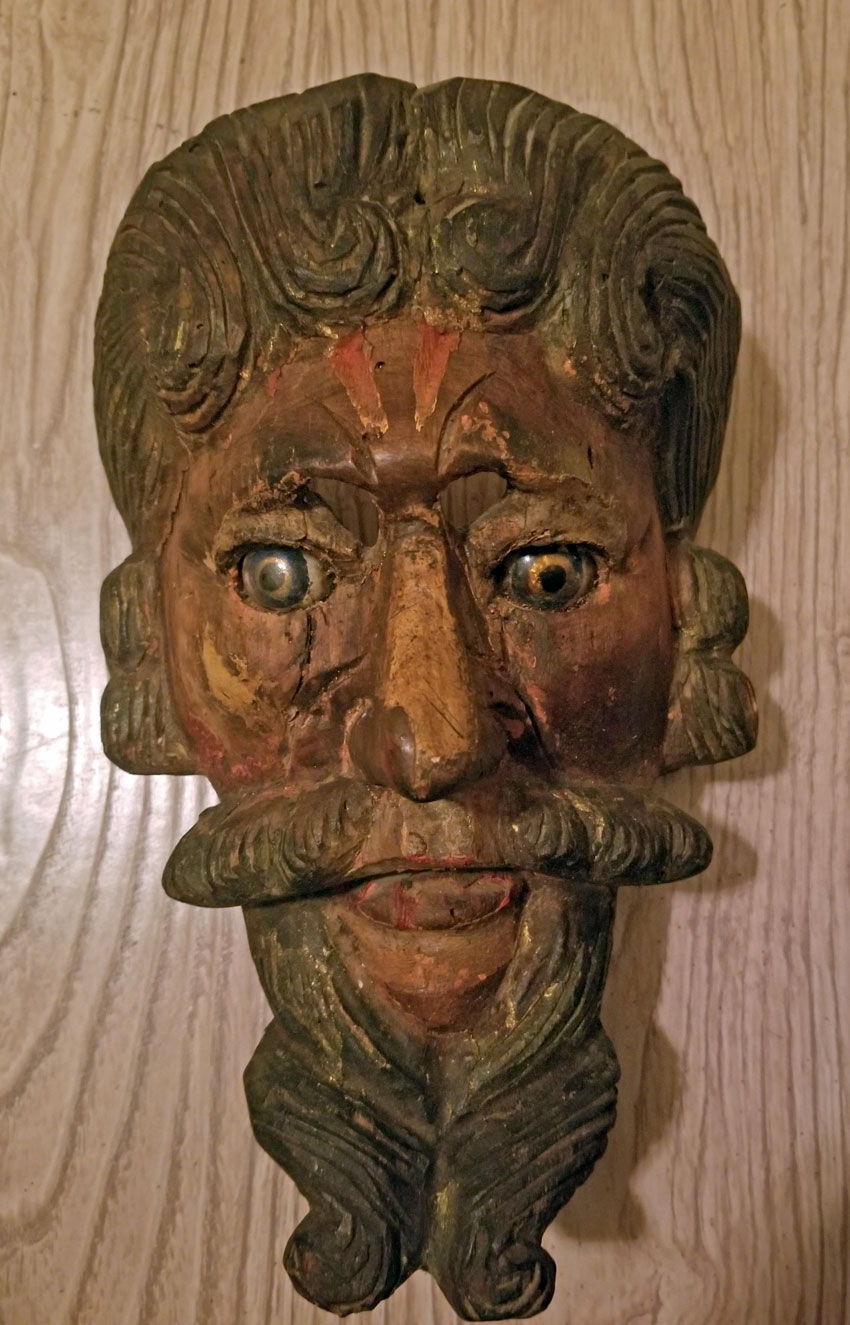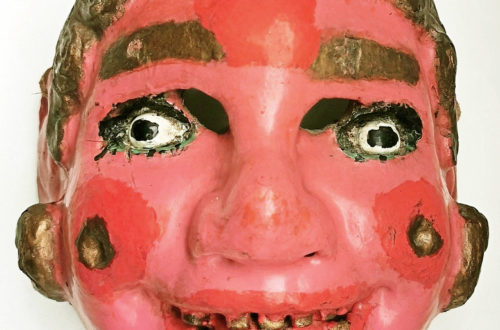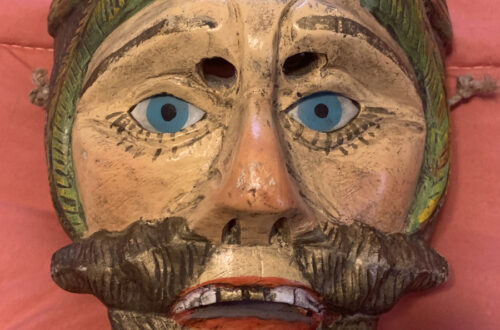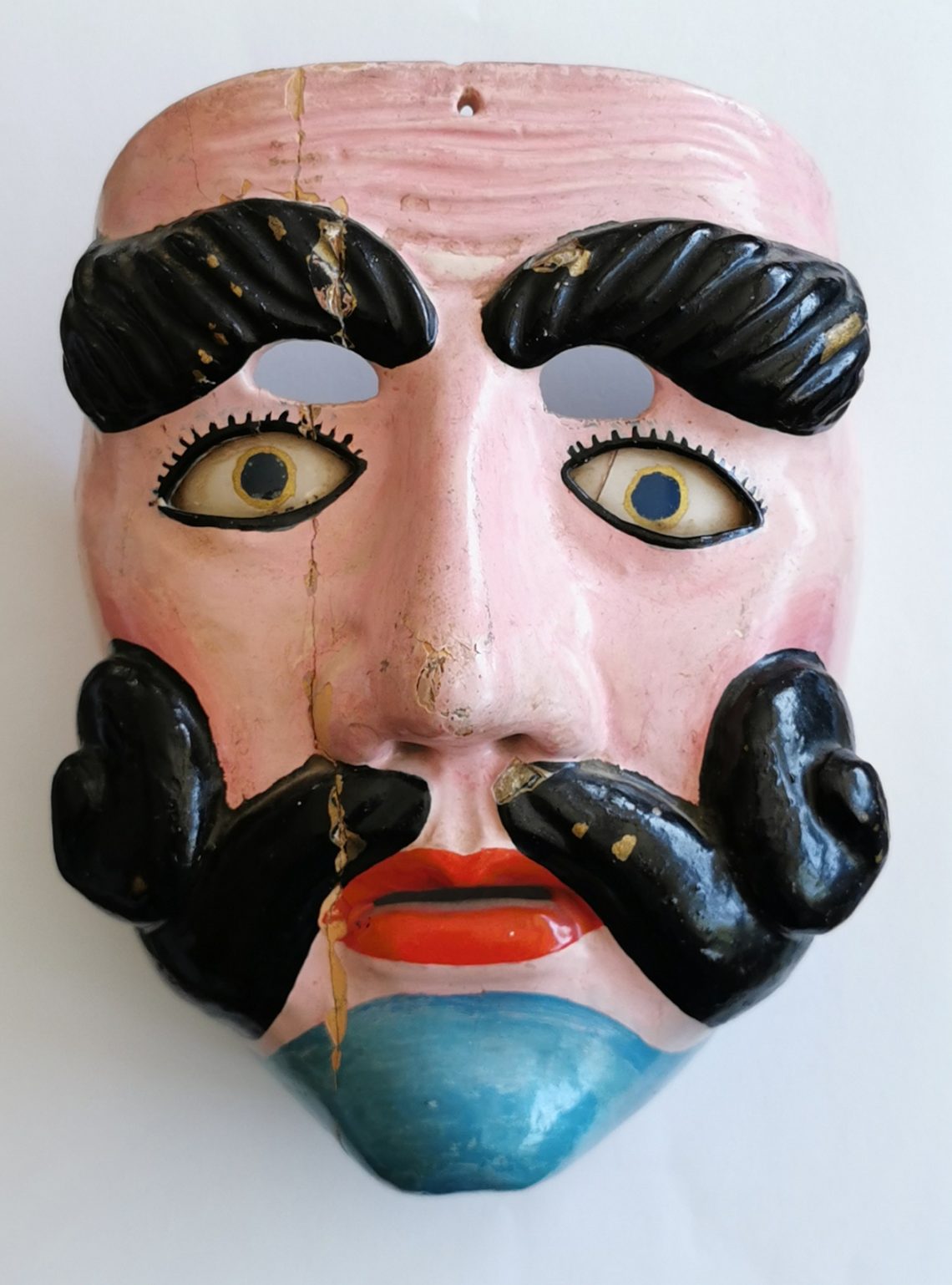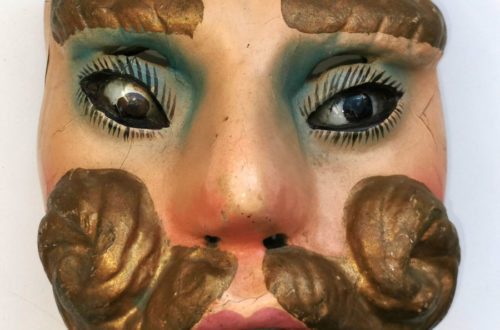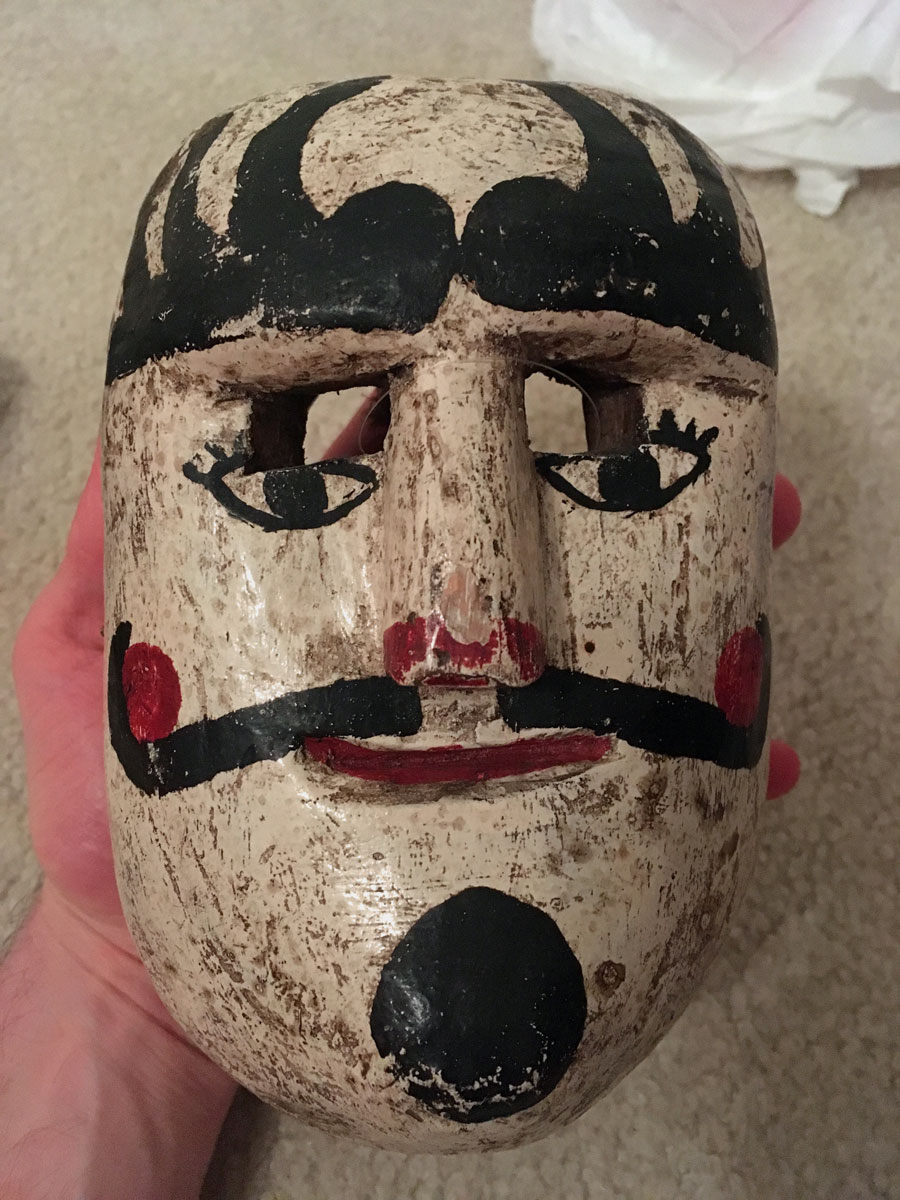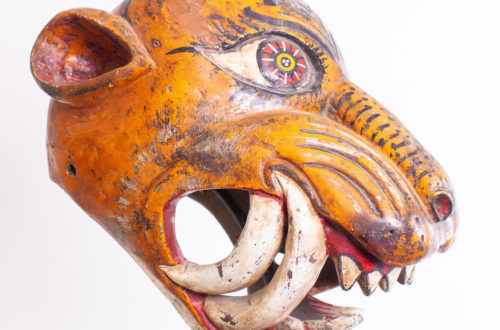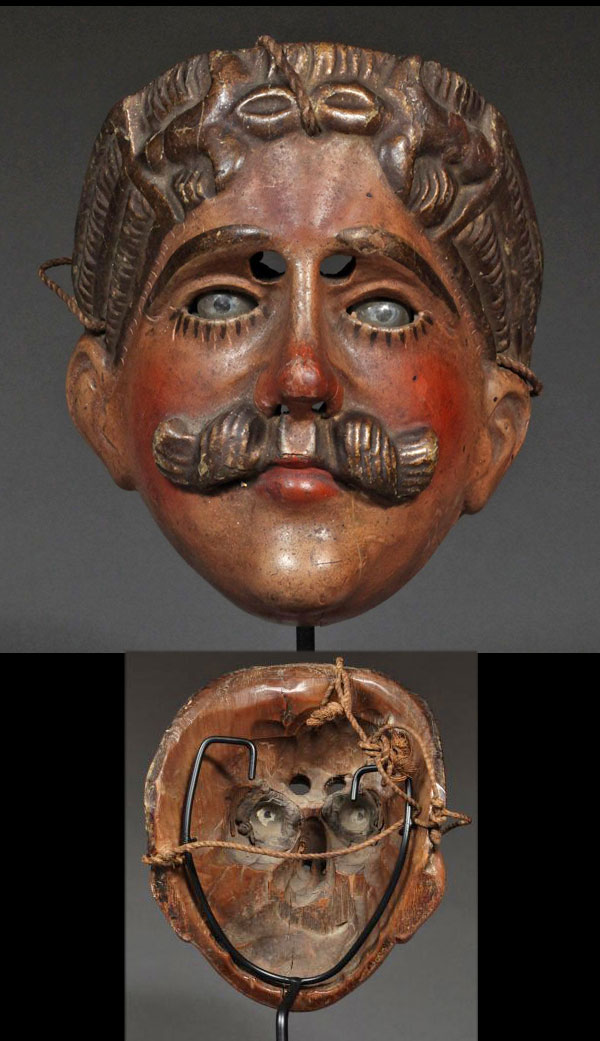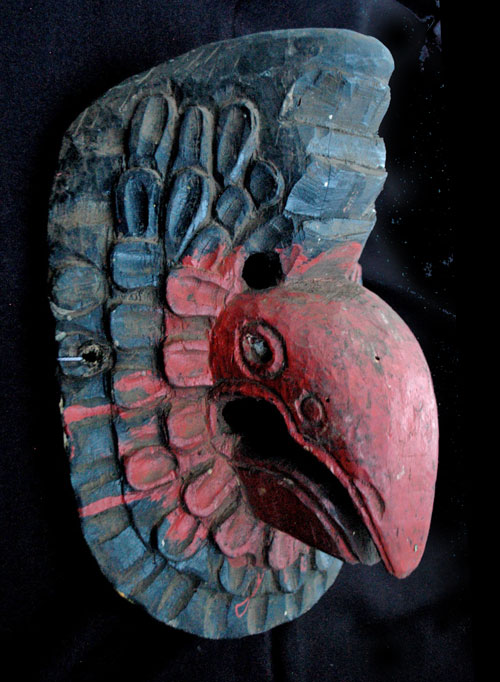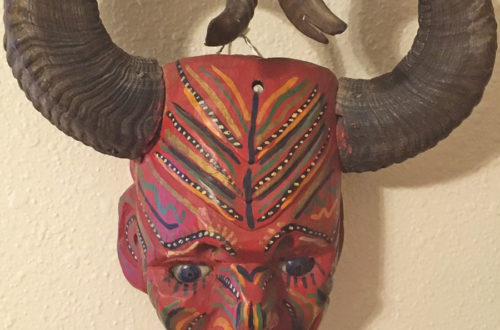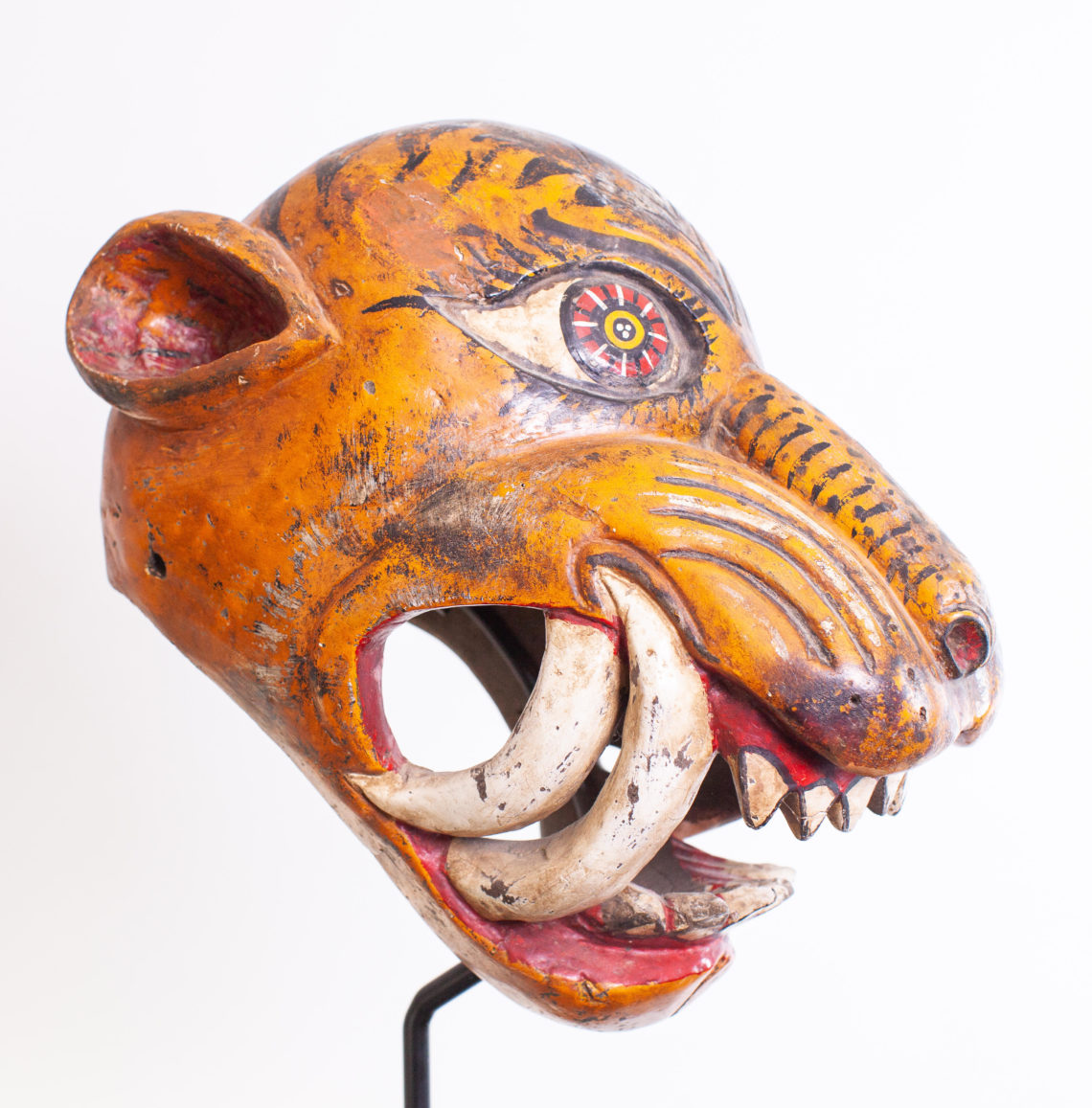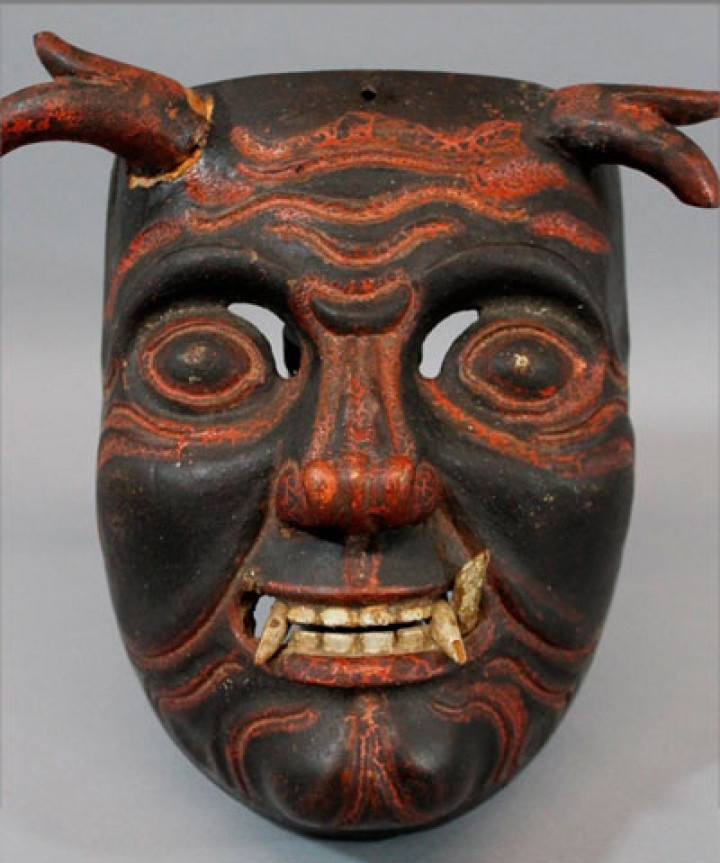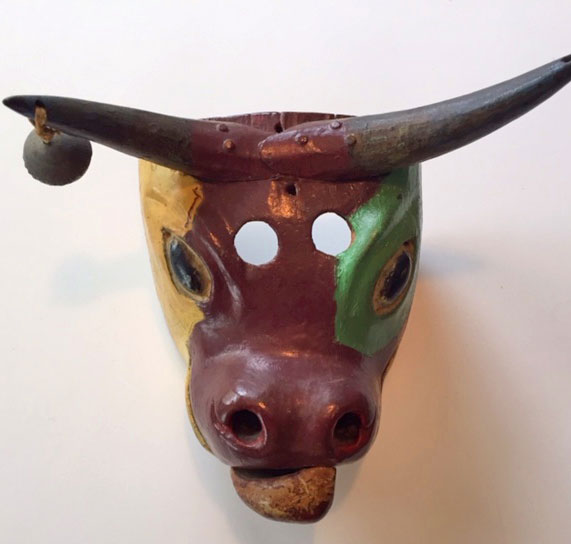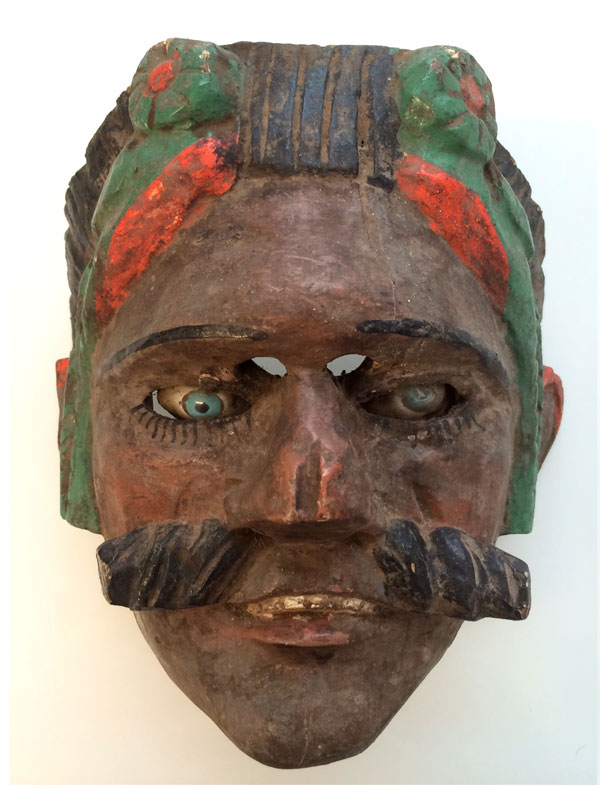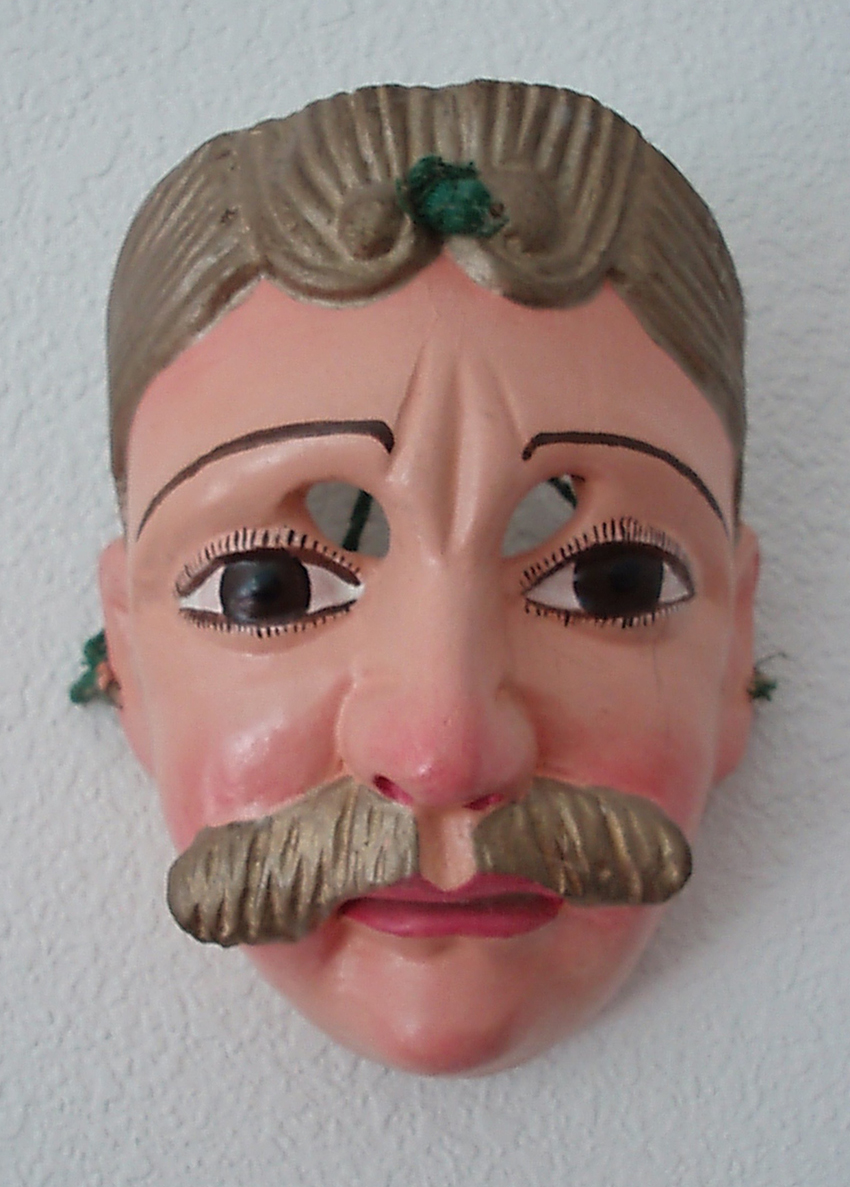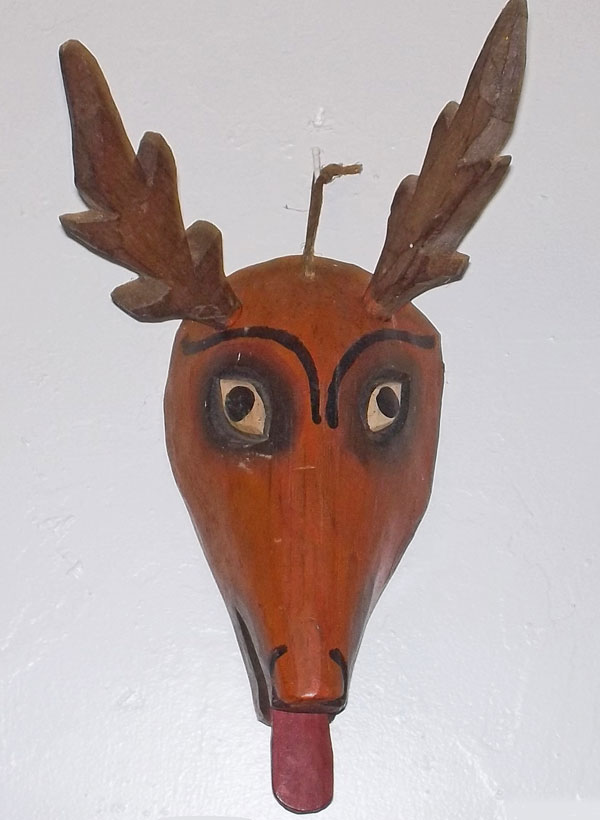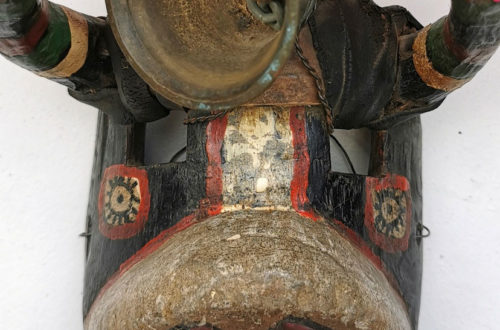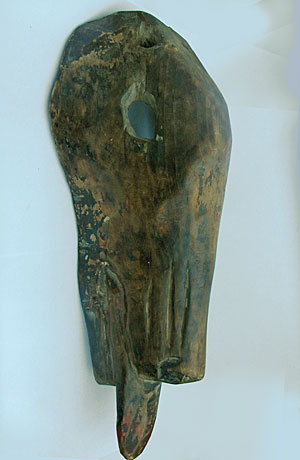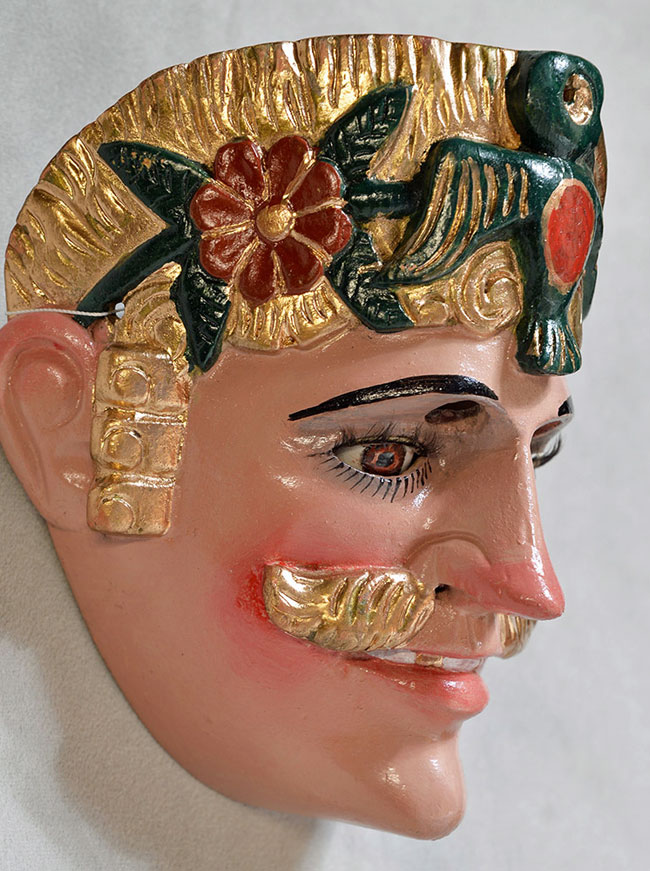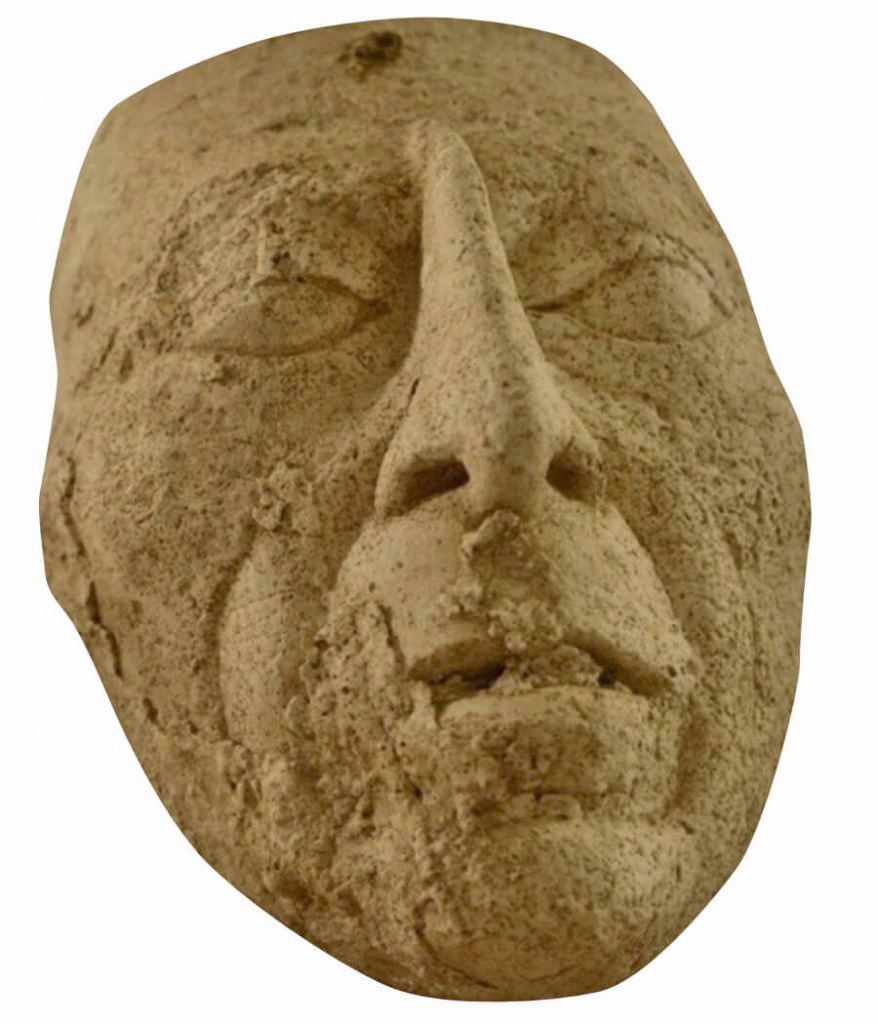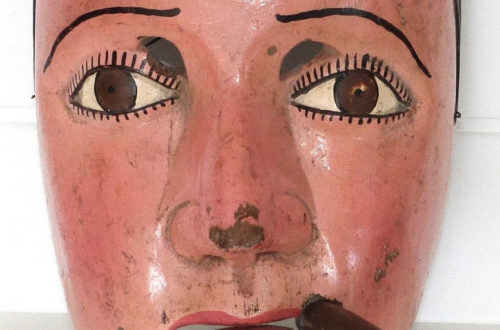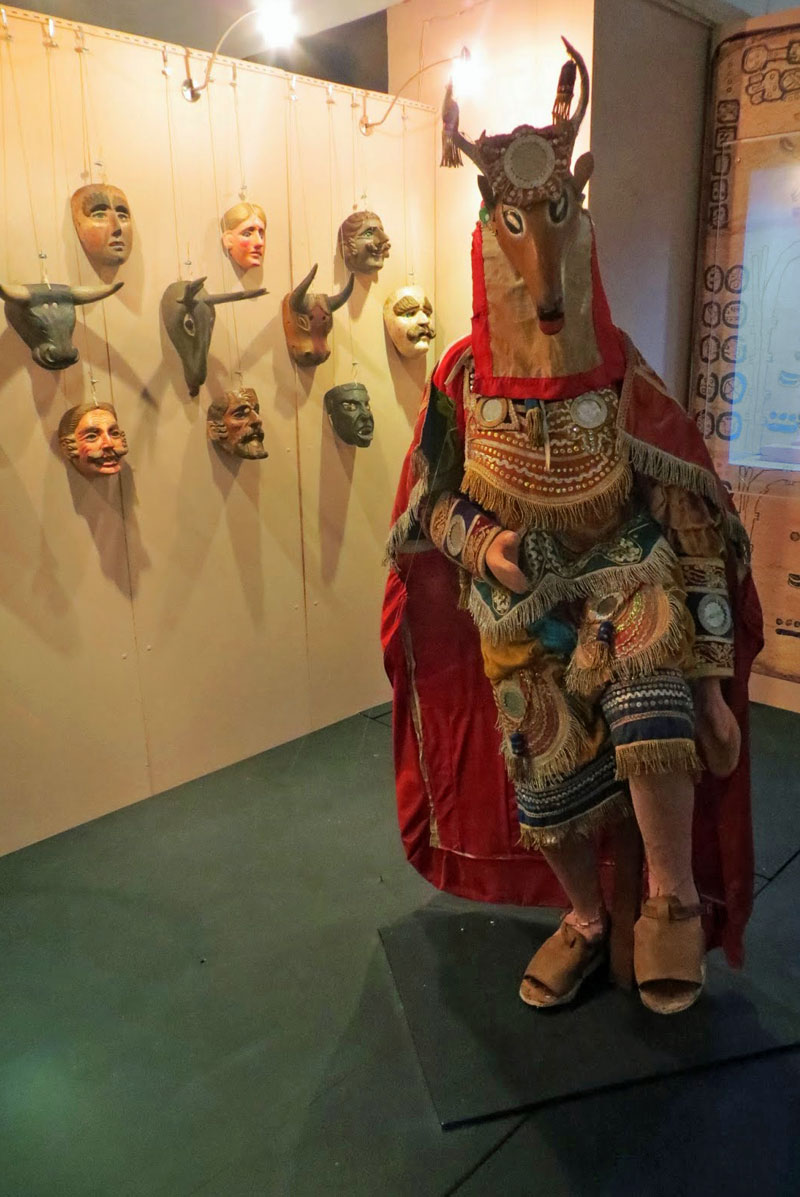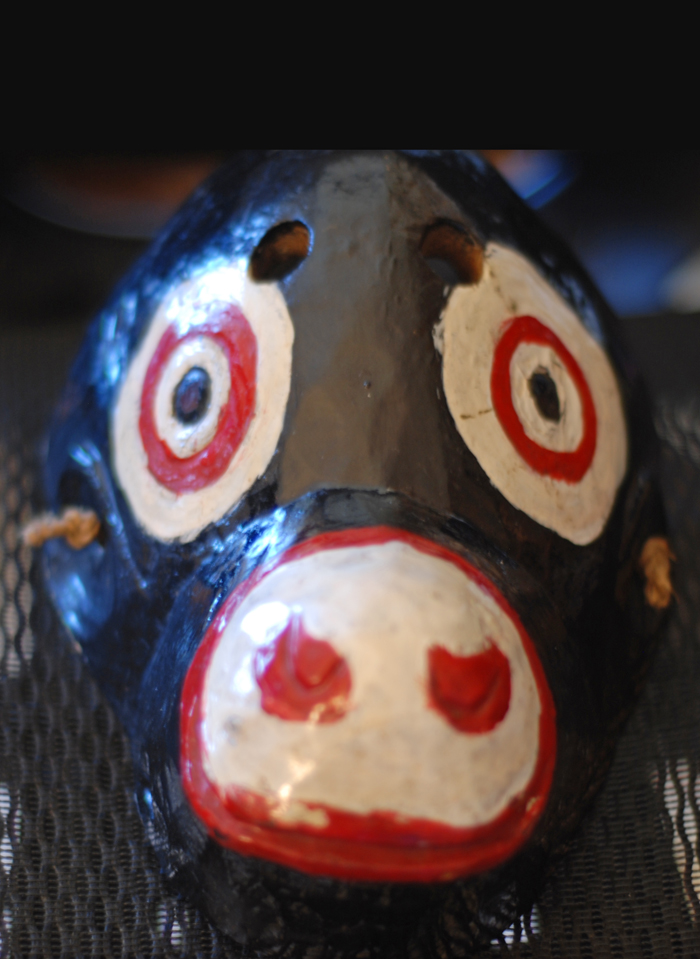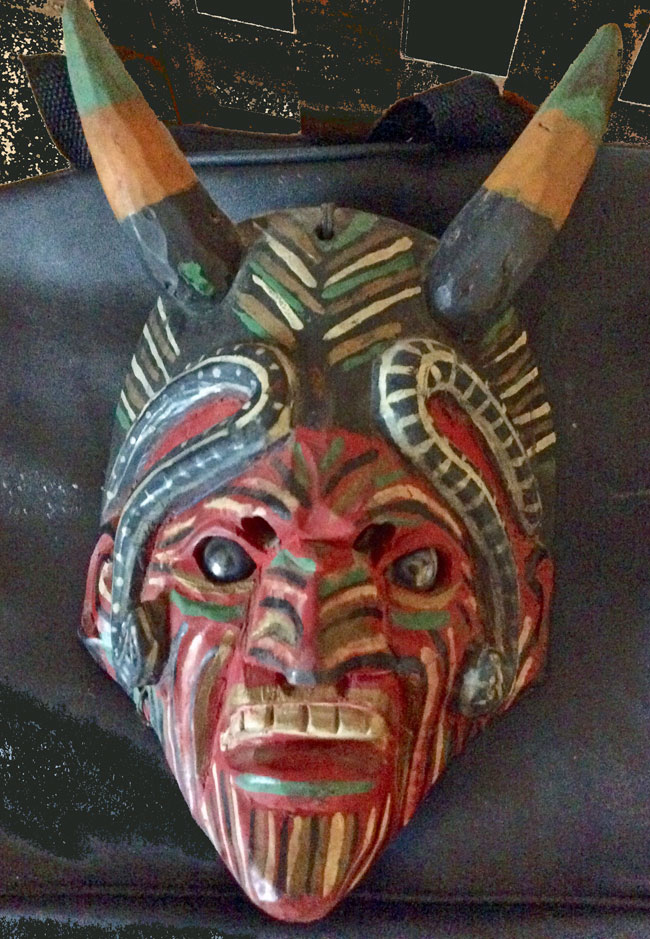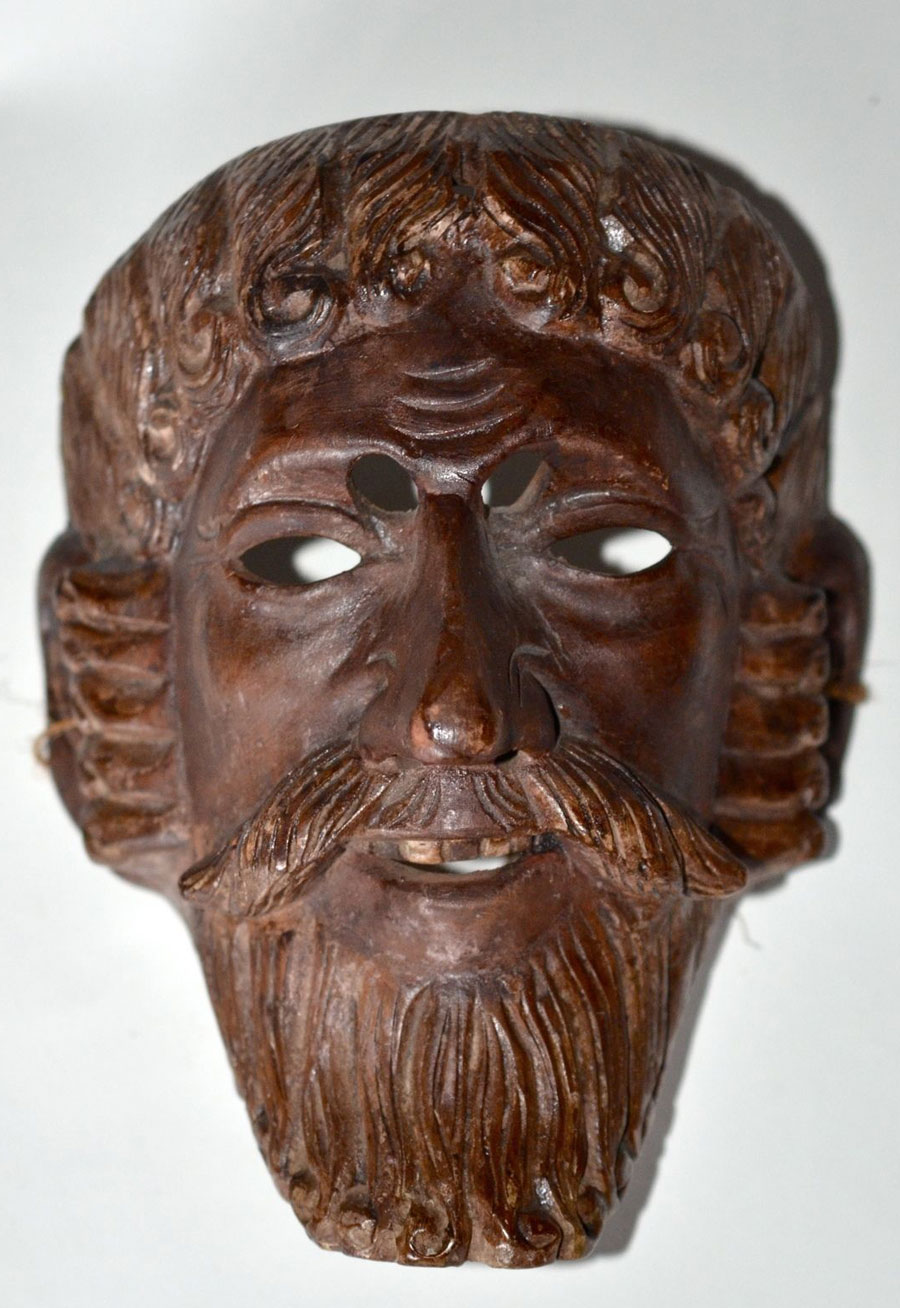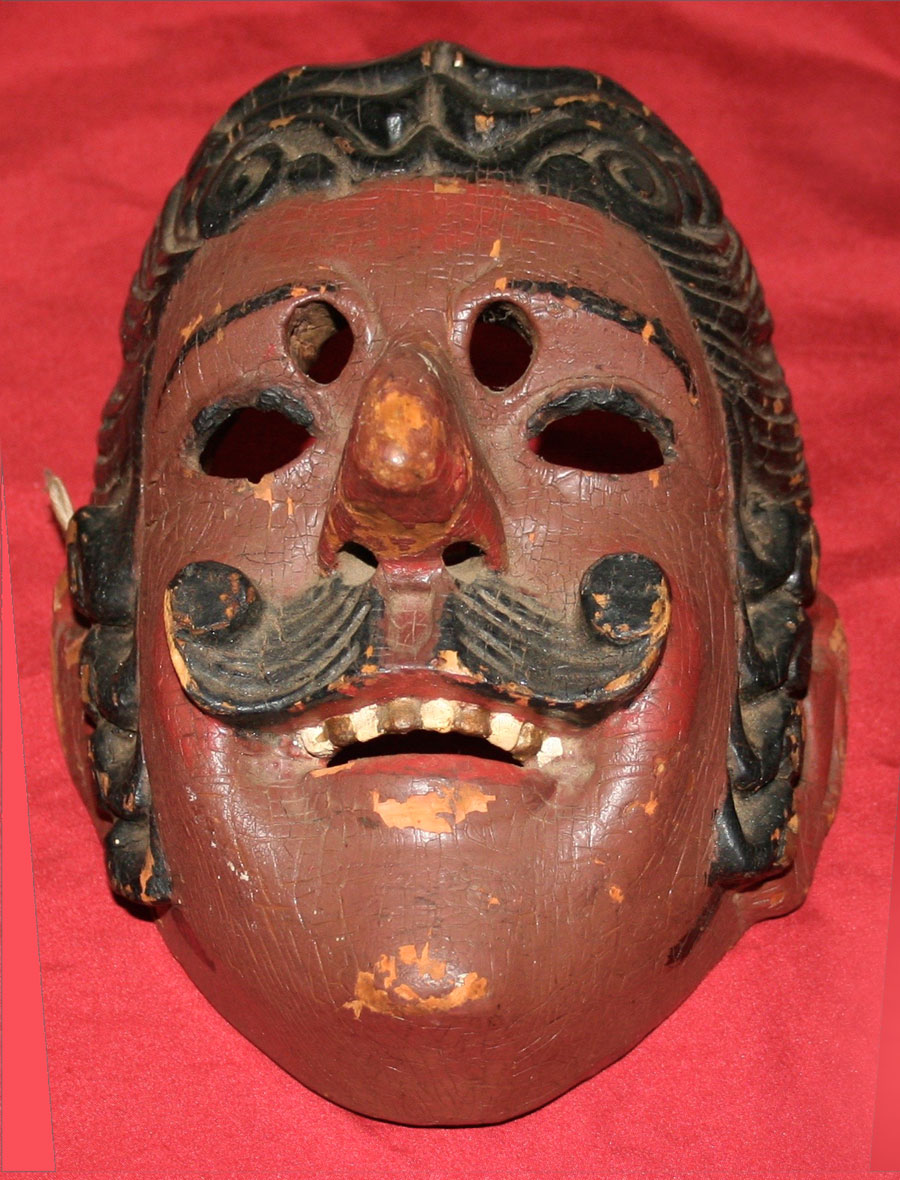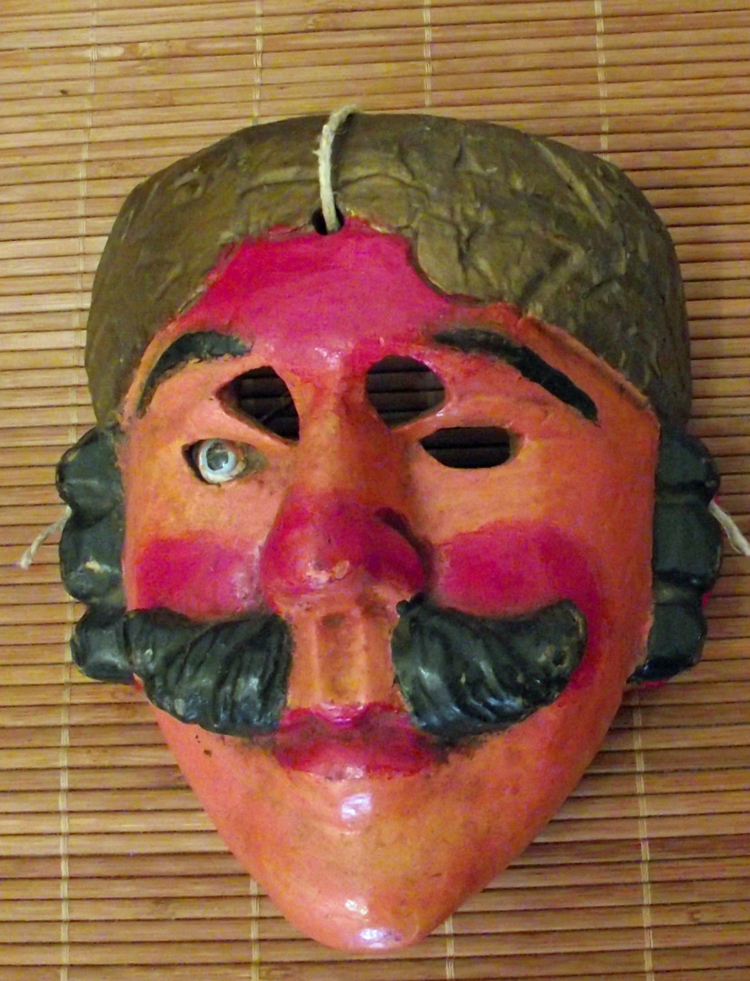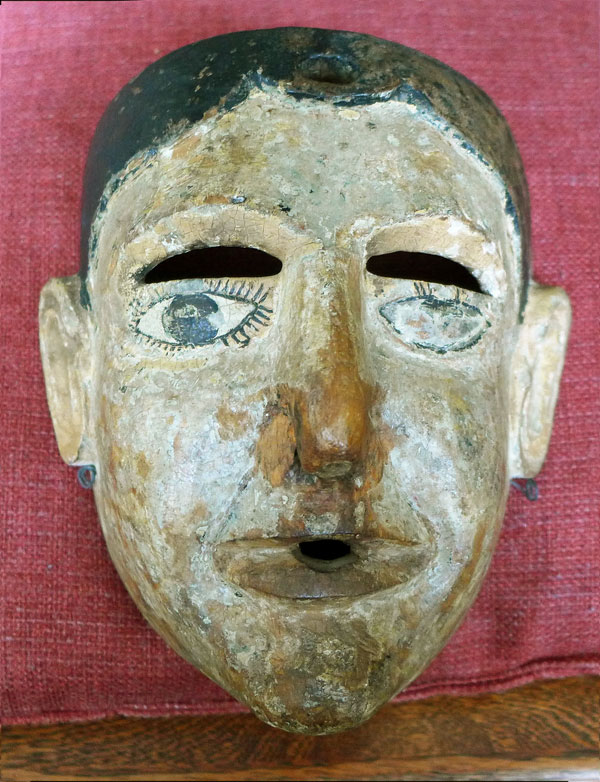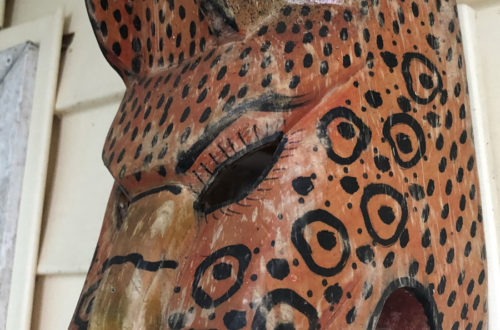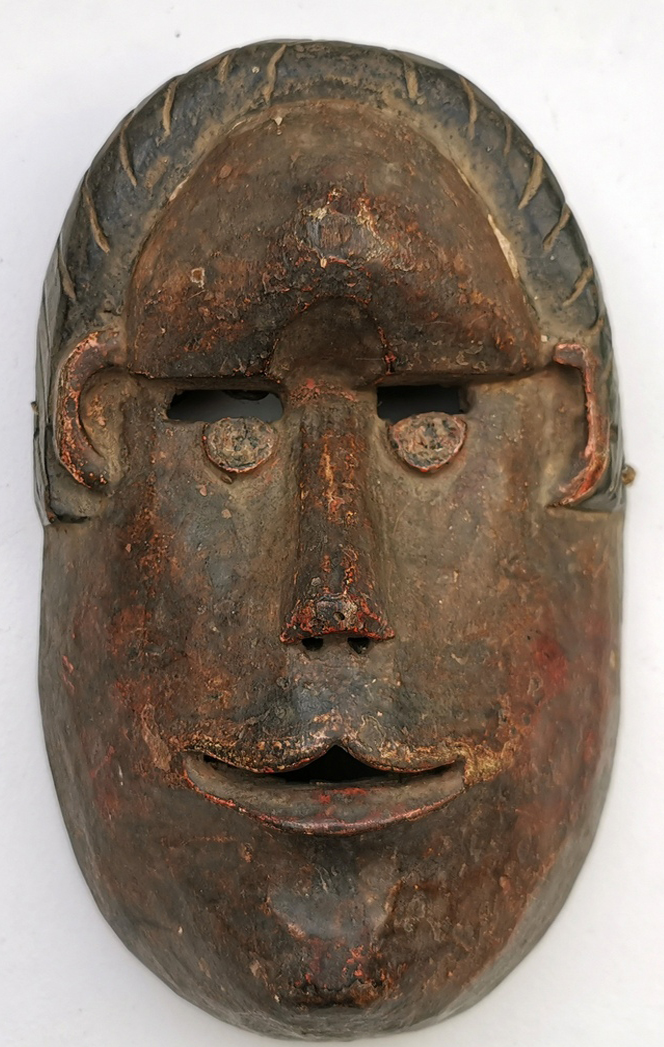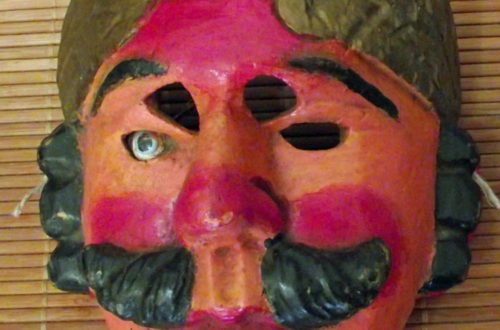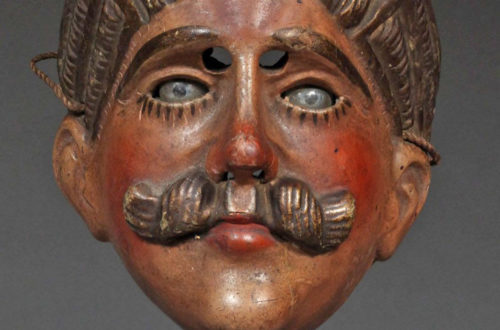Q: I saw this fabulous mask on the internet and was told only that it was from Guatemala. I’d never seen anything like it. So I sent the picture to Jean, the famous Guatemalan expert, thinking it might be a rare, authentic Diablo. Here is what he had to say… A: It could be a devil from Alta Verapaz, which has lost its horns (usually 3 horns – middle horn fixed on the top, reason for the large hole). Could be softwood, considering worms holes. As said, the mouth makes me think to Alwasiir (Baja Verapaz) or Murcielago (Alta Verapaz), but these have a rather constant design: they are always…
-
-
Expert repairs on a mask
Q: Further to the discussion about restoration some months ago, here is an example of a restoration I have had recently made on a mask. Just the scar of the break on the front side has been treated, all the other chips related to age and use have been left untouched. The break itself, glued many years ago, is still clearly visible on the backside. I wonder if they switched the eyes when they repaired the break because, strangely, the left eye shows a fissure not in relation with any fissure in the wood, although corresponding exactly to the break if transposed to the right side….but on the other hand…
-
Patzcar mask from central Guatemala
Q: I just received this mask and would like to find out the country of origin. It is painted carved wood and comes from a design shop in San Francisco which is closed right now due to the pandemic. I believe it is newish–looks that way. Originally (in the shop) it was priced at $350. It has a level of refinement that doesn’t really show in the photo. I’m thinking it is from either Spain or Mexico but am uncertain. Scotty, 1704 A: Your mask comes from the mountainous area of Baja Verapaz in the center of this small country south of Mexico. Patzcar is an old dance drama that…
-
Guatemalan tigre mask
G: My father recently passed away and we are working through the various items at his estate. He was a big collector. He has 12 masks that I would like help appraising so that we can determine our next steps. I haven’t found any paperwork on this mask. Our dad kept records and usually did research on most items in his collection of over 800 items. Jodie, 1687 A: The jaguar is usually called El Tigre in Mesoamerica (Southern Mexico to Northern Panama). These yellow-with-black-dots (sometimes stripes) masks help represent El Tigre as a character in several different dances featuring animals. This is an excellent example of one area’s style.…
-
Authentic new Guatemalan masks
Q: Attached are two views of mask made by Moises Lopez, Tactic, Guatemala, and one of his unfinished masks. I like unfinished mask and will purchase them if I can convince the mask maker to give one up before it is painted. I also have some masks that were purchased in Ecuador, Peru, Guatemala, and most are from Mexico. Some are gifts, some bought from make, some are tourist, some not. Janet Brody Esser confirmed Michoacan masks, but no estimate of value. What would it cost to appraise them? Jeri, 1686 A: The book “Masks of the World” describes in detail how authenticity affects the value of masks. Most valuable…
-
Smiling Gracejo mask from Guatemala
Q: In these uncertain times, if you wish to show a sympathetic item, here is one. This smiling mask from Guatemala is a Gracejo, which could be translated as a joker. Actually, it represents a young foolish “Cristiano” in the dance “Baile Moros y Cristianos” also named “Baile Rey Tardecindo” in Alta Verapaz (area of Cobán). Typical feature is the tongue passing between teeth. Here the eyes are made of nuts, I guess acorns. The mask is extremely light in weight, the wood could be pine (probably pinabete– a typical pine of Mesoamerica). Also typical of Cobán area is the presence of a row of small holes in the lower…
-
Death mask of Pakal the Great, Palenque
Q: We are working with an auction house that is very serious and they are in contact with the Mexicans about the history. They have also arranged for age dating thru Oxford Authentication and results will be in a month. Questions asked: When was it found & by whom? What has been studied so far? Can we get new measurements from it? Background and all the history they can tell about this Stucco masterpiece. What we are sure of is that the mask is Pakal as the only thing we can be really sure of. You are free to publish what you want about the King and we will keep…
-
Guatemalan monkey mask
Q: From reading your previous articles I believe that this is a Guatemalan monkey mask, but that is mostly a guess. The woman who I bought this from for twenty five dollars said that it is something vintage and authentic. It does look used to me, but the paint looks newer. Thank you, Deb, 1646 A: Your mask looks like it was used for awhile and then repainted, which is something the morerias often do to keep their customers happy. The initials “LIC” may be the name of the moreria. It would be nice if you could check this out. I wrote the following on this site on July 11…
-
Refurbished cowboy mask from Guatemala
Q: Good morning Bob! In your opinion, is it a Guatemalan mask? Is it old? Is it repainted as it seems? Could you tell me something about this mask? The only things I know are those read on your site. Thank you, Monica, 1637 A: Thanks for sharing another interesting mask with us. It was probably meant to be a vaquero (cowboy) when it was originally made in the late 20th century. Then, in the early 21st, the mustache, sideburns and eyebrows changed to black. The morerias (Guatemalan costume and mask rental shops) will often clean, repair and repaint masks when they need improvement. They may also change one or…
-
Early monkey mask from Guatemala
Q: Monkeys masks are very common in Guatemala (and Mexico). They are called “Mono” or “Mico”. This later name concerns a small monkey and makes reference to the spider monkey, ubiquitous in these regions. There are used in various dances, and also in the ceremony of Palo Volador, still performed in Chichicastenango and Joyabaj in the Quiché highlands. The present mask is typical of the Palo Volador in Chichicastenango. Today there are painted with bright colors of black, red and white. The present one dates probably from the mid-XX. It has been painted black and brown. Jean, 1627 A: Jean continues to build a comprehensive collection of authentic Guatemalan masks.…
